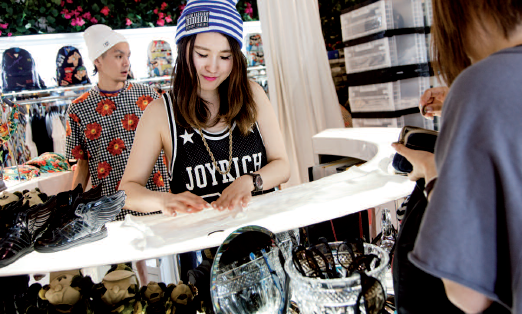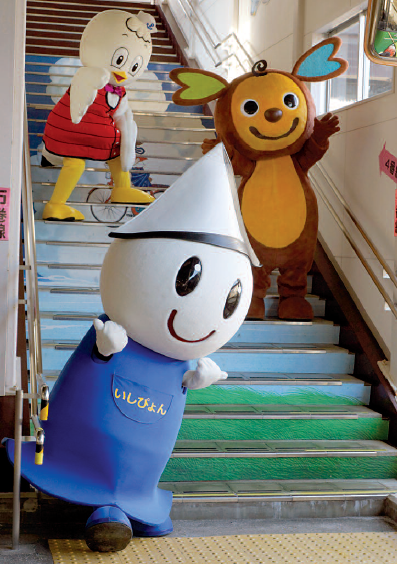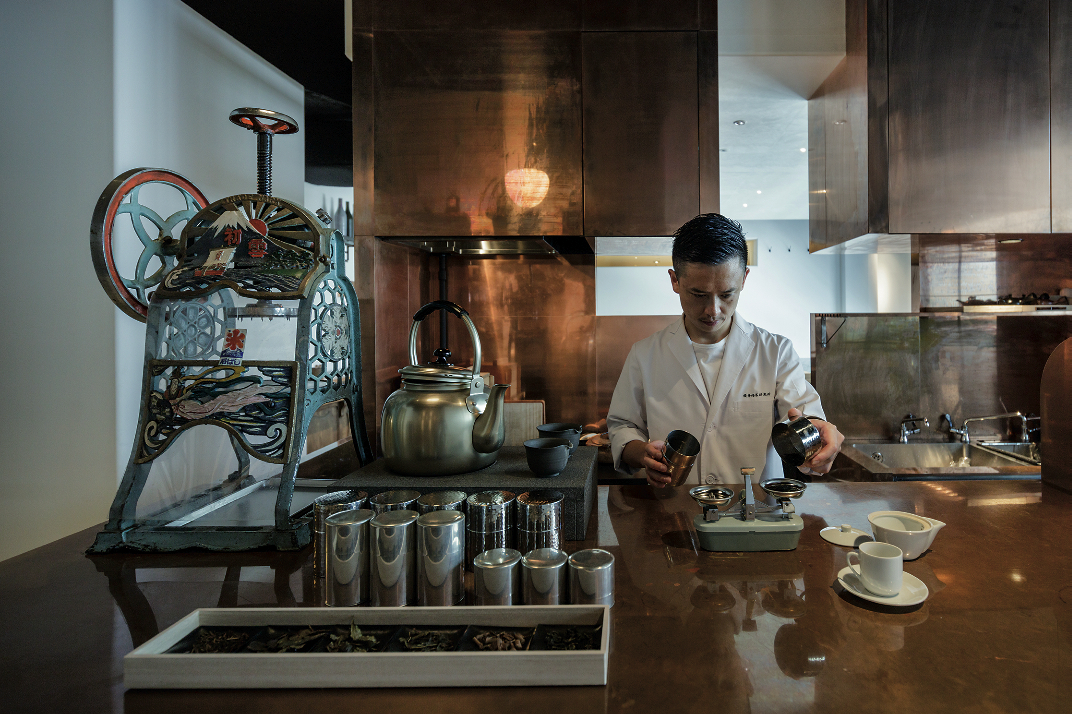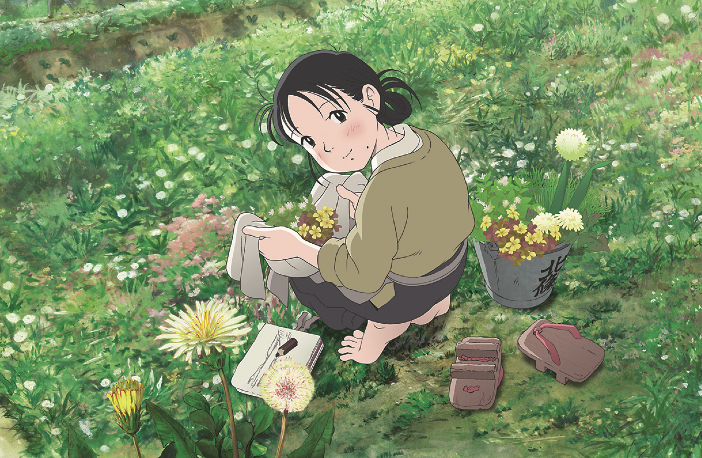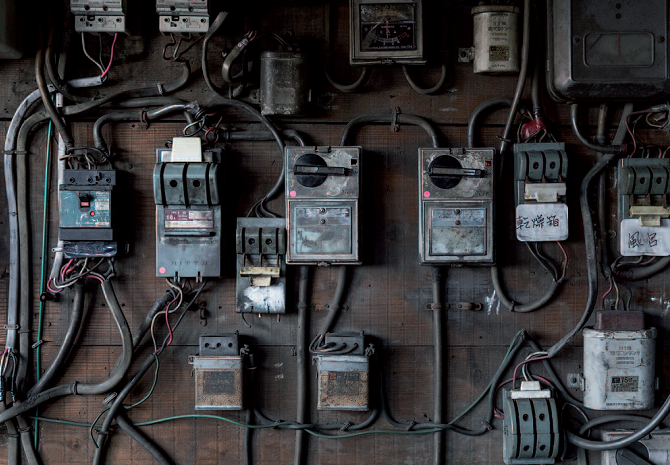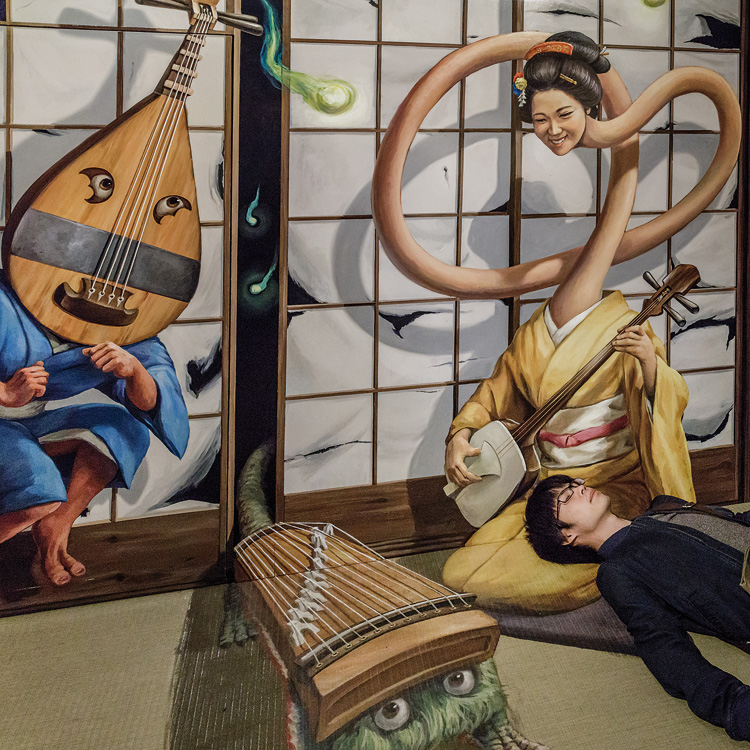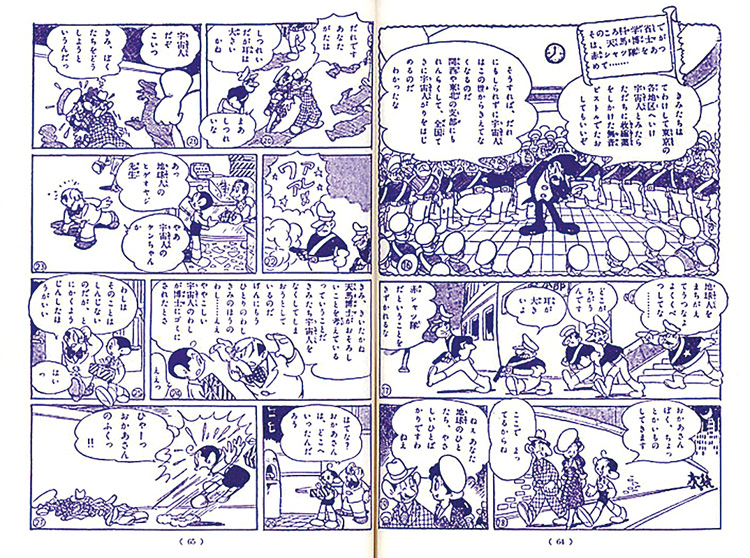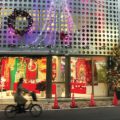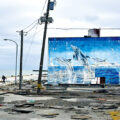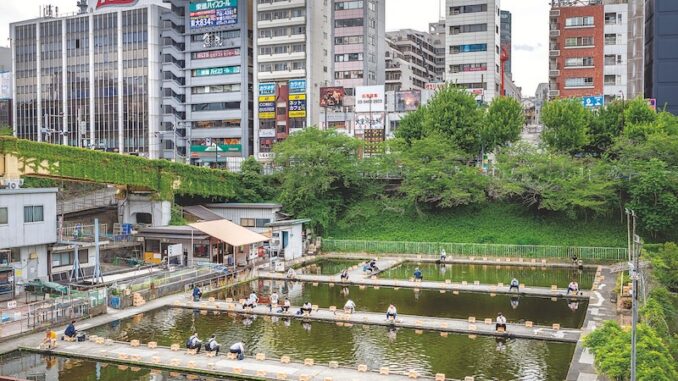
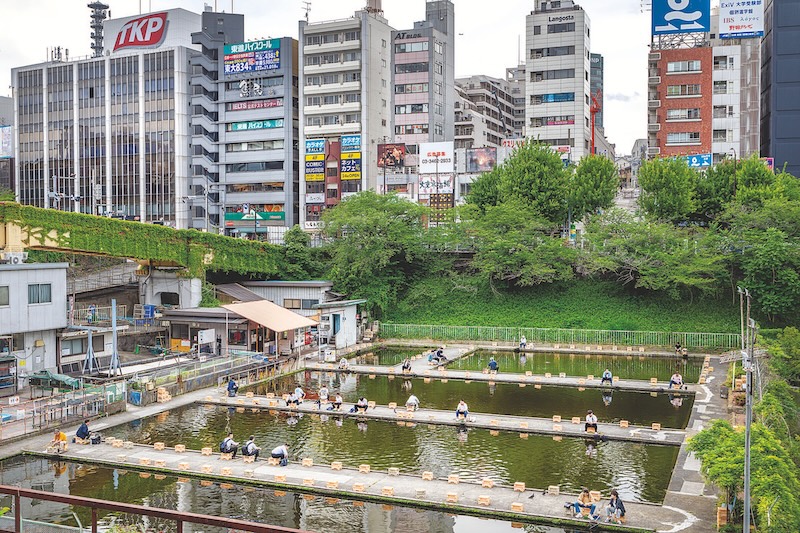
There’s no need to move to the countryside or go out to sea to indulge your passion
I’m pretty sure that when people think about fishing, they imagine a waterfront, an exotic beach, a quiet pond in the countryside or even catching fish from a boat. Nobody, for instance, would associate central London or Paris with fishing. However, in Tokyo (and other Japanese big cities) you can do just that.
Tokyo has several artificial fishing ponds that are regularly visited by both amateurs and pros, and the two most popular spots are located smack in the centre of the metropolis: the Benkei Fishing Club is near the ultra-posh Hotel New Otani, while the Ichigaya Fish Centre (IFC) is next to Ichigaya Station on the JR Chuo and Sobu lines.
Although overlooked by high-rises and the imposing Metropolitan Expressway, Benkei almost feels like a natural pond thanks to the many trees surrounding it. Customers can fish for black bass, rainbow trout, bluegill, snakehead and carp either from the deck (520 yen for half an hour) or by boat (1,700 yen an hour).
The IFC, on the other hand, has more of a gritty, working-class feel though it sometimes appears in romantic scenes in TV dramas. Seen from above, it also looks quite impressive as it almost completely blocks the course of the Kanda River. More than once, from the vantage point of Ichigaya Station’s platform 2, I spied anglers gathered around the pools, totally unconcerned about the hectic Tokyo life going on all around them. Urban fishing felt both attractive and surreal. So on a warm spring afternoon, I paid a visit to the IFC, eager to test my admittedly poor fishing skills.
The IFC has six pools of different sizes, with depths ranging between 1.5 and 2 metres. In five of those pools, you can only fish carp, while the smallest one has a mix of goldfish, small carp and river fish and is mainly reserved for children. During the holidays, the little kids can also try their hand at goldfish scooping, a traditional Japanese game.
At the IFC, adults pay 780 yen for one hour, 1,530 yen for two and 2,910 yen for the whole day. You can bring your own rod as long as it’s no more than three metres long. You can also bring bait, but live bait is not allowed. In any case, you can hire a rod and use the shop’s mashed bait for 100 yen each. This place takes good care of its equipment, so you don’t have to worry about that. They have both long and short rods.
After choosing a rod, I grabbed a net and headed to one of the pools. Choosing the right fishing spot is very important because it can affect your chances of catching the ever-elusive carp. I noticed that many guys (there were almost no women on that day) were gathering around the corners of the pools while leaving other spots completely empty. I later learned that those are the best places to fish. That’s because the carp don’t just swim leisurely around the pools but tend to gather at the corners. Another spot they like is the metal grill from which the air escapes. During the holidays and weekends, the place gets crowded and it may be difficult to grab a good fishing spot, but if you have a chance, choose one of the corners.
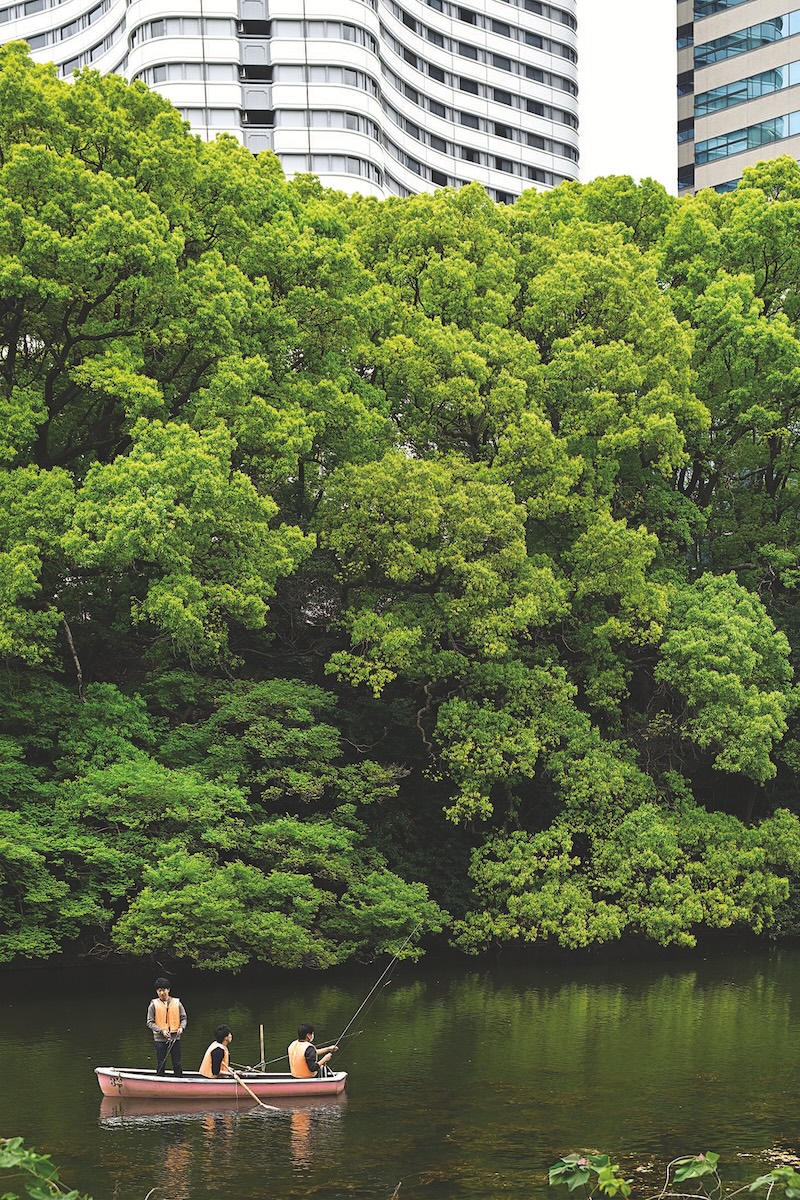
Time, as it turns out, is just as important as the location, and to maximize your chances of catching something, you should carefully choose when to go fishing. Apparently, fish are most active early in the morning and in the evening, so the best time to go is right after the store opens or before it closes. Also, it is easier to achieve a big catch if the weather changes in some way, such as just before or after the rain, rather than with constant clear skies.
Of course, I chose a nice balmy day to go fishing. Under a blue sky, I sat on a chair, which turned out to be a beer case, cast my line and waited for something to happen, completely clueless about what I was supposed to do or what cues I had to look for. The water was an opaque colour and I couldn’t see all the way to the bottom.
After a while, I noticed that a grizzled Japanese guy in his late 60s or early 70s was staring at me with an amused look on his face. “First time fishing here?” he said. He must have taken pity on this clueless gaijin (foreigner) because he motioned me to move my beer crate closer to his spot and proceeded to show me the finer points of pond fishing.
“Fishing here may look easy,” he said, “but actually catching something requires patience, knowledge and a few tricks. Just dropping a line into the pool by no means guarantees a catch. Those carp are clever and often just eat the bait on the hook without biting.
“First of all, I want you to think about the kind of eating habits of carp.” I made a mental picture of the many carp that live in the river near my house. They spend their time lazily floating around, then dart to either bank as soon as they see a human approach, hoping they will throw a handful of stale bread or something else edible. Looking down at a mob of carp pushing each other with their wide-open mouths out of the water always makes me slightly queasy.
My fishing sensei (teacher) interrupted my reverie to explain that carp usually feed by sucking up food that has sunk to the bottom of the pond. “Therefore,” he continued, “it’s important to position the bait as close to the bottom as possible. This is the method I always use.” After that, he got too technical for my limited knowledge. His explanation had something to do with how you cast your line and how your float looks in the water. Or something like that. The only thing I understood was that the float must be firmly upright.
Next, he showed me how to attach the bait I had bought at the reception to the hook. “It’s no good to just form a ball like many people do,” he said. “You should shape it like a pyramid. And don’t use too much bait. The pyramid should be as small as possible, just enough to cover the hook. By doing this, the bait will dissolve more easily in the water, and the carp will quickly gather around that spot. Also, for the same reason, be sure always to drop the bait in the same place. That way, the smell of the bait will attract more carp to that area, which will greatly improve your chances. On the other hand, if you put bait in several different spots, the carp will scatter all over the place, and you’ll have fewer chances to catch them.”
So I followed the guy’s instructions, cast my line in the pond and waited for a bite. After about a minute, I saw my float sink into the water and I pulled, but only the hook came out of the pond. “Dame! Dame!” (“No good, No good”) the guy said, getting increasingly irritated with my mistakes. “Beginners like you tend to do that, but if you’re not patient, you will often miss. If the float just moves or partially sinks, a carp may have just touched the float. You have to wait until the float sinks completely. Only then, should you quickly raise the rod and pull. If you have hooked the fish well, you should feel the weight of the carp on your rod. At that moment, never lower the rod, but keep it in an upright position. When the carp becomes weak and gradually approaches where you’re standing, catch it with your net.”
Needless to say, I didn’t catch any fish. I even contemplated moving to the small goldfish pond, but it was a little embarrassing to sit among all the small kids. However, if you like fishing, visiting one of the many fishing ponds around the country is a nice way to experience a different side of Japan.
Jean Derome
To learn more on this topic, check out our other articles :
N°142 [PRESS] Tsuribito is still going strong
N°142 [FOCUS] The Japanese, mad about fishing
N°142 [SEA] An all-consuming passion
Follow us !

